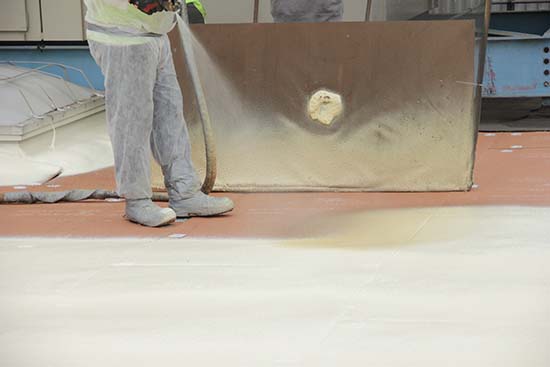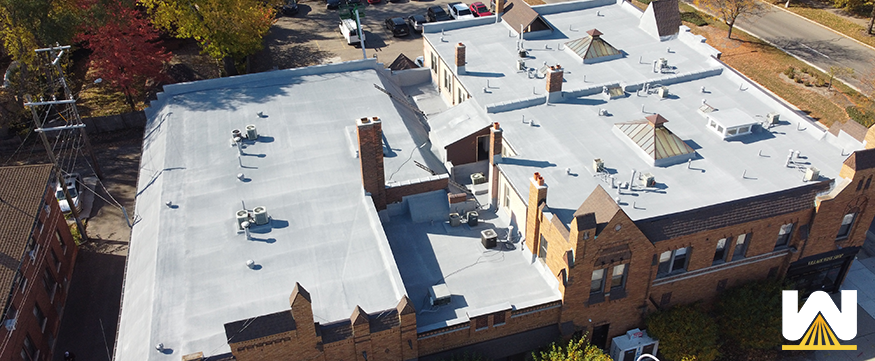The spray foam that commercial roofing contractors use is called 3-pound foam. This means that a cubic foot, 1ft x 1ft x 1ft weighs 3 pounds.
This differs from the foam used for interior insulation, which is 2-pound or ½-pound foam.
The main reason 3-pound foam is used for roofing is that it self-levels better (due to a slower reaction time) than the other foam versions.
This is essential when you’re designing a roof for proper sloping.
Also, 3-pound foam is 50% harder than 2-pound foam, which is vital for a roof when it experiences foot traffic, hail, snow, flying debris, etc.
Here are some other questions related to the spray foam that roofers use:
- Are there any differences between the spray foam produced by different manufacturers?
- Do contractors use the same spray foam in Spring, Summer, and Fall?
And so you’re aware, West Roofing Systems has been in spray foam roofing since 1979. Since then, we’ve partnered with many manufacturers of spray foam. We have a testing facility where many manufacturers have sent in foam to be tested during various conditions. There have been many variations of foam due to environmental issues and performance.
This article has been reviewed, edited, and approved for publishing by a former spray foam installer, service manager, and now salesman with more than 30 years in the spray foam industry.
Let’s get started!
Are there any differences between the spray foam produced by different manufacturers?
Yes.
Spray foam manufacturers use different blowing agents. They also have different recommended temperatures to apply specific foam.
For example, one manufacturer might suggest their “Summer” foam be installed at 75-90 degrees ambient temperature.
Another manufacturer might suggest their “Summer” foam be installed between 65 and 80 degrees ambient temperature.
You may wonder what “Summer foam” is? Is there a “Fall foam”?

Do contractors use the same spray foam in Spring, Summer, and Fall?
They do not. They choose a specific foam that will perform best with the current weather.
To install good spray foam, a contractor needs to be an expert in the three E’s:
- Electrical – the equipment used in mixing/heating foam
- Environmental – the air temperature, deck temperature, sun, etc.
- Exothermic – the heat created from the chemical reaction when the A and B components meet
Certain spray foams are engineered to perform best at specific temperature ranges. Some spray foams are excellent when it’s 55 degrees; others are great when it’s 90 degrees outside.
This throws a wrench in larger roofing projects that take 2-3 months to install. If the project starts in August and ends in October, two completely different foams can be used because of the significant drop in ambient temperature.
What’s next?
Now that you know a little about the type of spray foam roofing contractors use, what’s next?
Here are some articles answering the most popular questions about spray foam:
- How much will a spray foam roofing installation cost?
- VIDEO: What is the process of installing spray foam from start to finish?
- How long will a spray foam roof last?
- What common problems do spray foam roofs have?
And lastly, how does a spray foam roofing system compare to single-ply, metal, built-up, etc.? Please view our eBook below that has the pros and cons of all commercial roofing systems.


